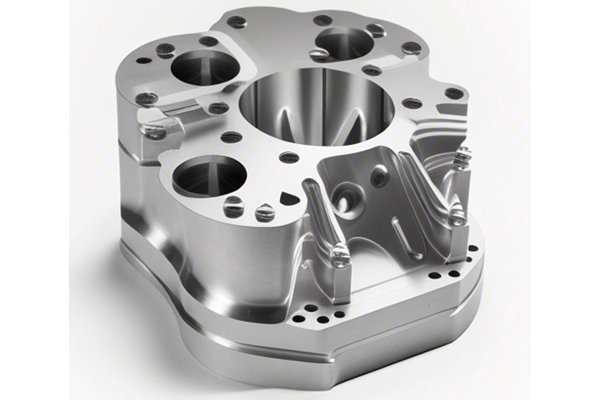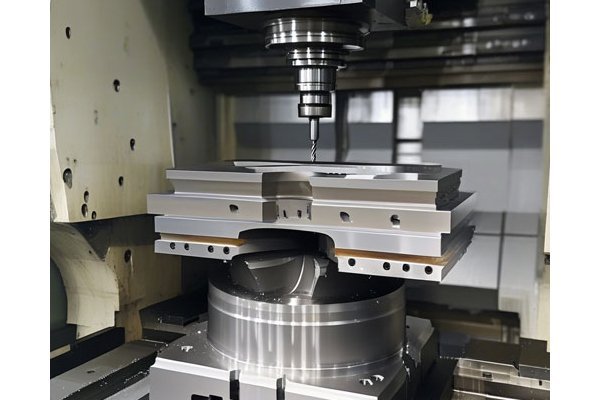Opening
Did you know that the global aluminum market is projected to reach over $200 billion by 2026? As we dive deeper into the world of machining and manufacturing, understanding the trends and forecasts within the aluminum CNC processing industry becomes crucial for stakeholders looking to optimize their operations and make informed decisions. From enhanced technology to shifting supply chains, several factors significantly affect the market—including economic dynamics, environmental regulations, and the advent of innovative machining techniques.
The Aluminum CNC Processing Landscape
Understanding CNC Processing with Aluminum
Computer Numerical Control (CNC) processing refers to the automated control of machining tools by means of a computer. CNC machining offers exceptional precision, efficiency, and versatility, making it a preferred method for working with various materials, including aluminum. Aluminum, known for its lightweight, corrosion resistance, and high strength-to-weight ratio, has become an indispensable material across multiple industries, such as aerospace, automotive, construction, and consumer goods.
Current Trends in Aluminum CNC Processing
One of the most impactful trends in the aluminum CNC processing industry is the incorporation of automation and the Internet of Things (IoT). Manufacturing processes are becoming more interconnected, enabling real-time monitoring and predictive maintenance. Companies leveraging IoT can significantly reduce downtime and improve efficiency, which ultimately contributes to a more robust processing of aluminum.
As global concerns about sustainability grow, CNC processing manufacturers are increasingly adopting eco-friendly practices. This includes utilizing recycled aluminum, minimizing waste, and implementing energy-efficient machinery. Companies that prioritize sustainability not only comply with regulatory requirements but also attract environmentally conscious consumers, thus enhancing their market position.
Innovative cutting technologies—such as laser cutting and waterjet machining—are enhancing the capabilities of aluminum CNC processing. These advancements allow for intricate designs with minimal material loss and improved surface finishes. Techniques such as high-speed machining have also emerged, enabling fast production cycles while maintaining accuracy.
Developing economies in Asia, Latin America, and Africa are witnessing a surge in demand for aluminum products due to rapid industrialization and urbanization. This trend presents lucrative opportunities for CNC machining companies looking to tap into these markets. As industries grow in these regions, the necessity for precise and high-quality components will only escalate.
Companies are shifting towards more customized manufacturing solutions, driven by consumer demand for personalized products. CNC machining is perfectly positioned to meet these needs by providing rapid prototypes and the ability to manufacture small, specialized batches without significant overhead. This trend highlights the necessity for CNC machining services that can adapt to consumer requirements quickly.
Market Forecast Insights
Economic Factors
Economic factors such as GDP growth, inflation rates, and trade policies can directly influence the aluminum CNC processing industry. For example, a strong economy may lead to increased investment in infrastructure projects, consequently elevating the demand for aluminum components. Conversely, economic downturns may cause businesses to cut back on manufacturing or delay new projects.

Geopolitical Factors
Geopolitical tensions can also impact aluminum markets significantly. Tariffs and trade restrictions can cause fluctuations in aluminum prices and availability, affecting procurement strategies for CNC machining companies. For instance, changes in trade policies can make recycled aluminum less attractive or complicate supply chains for aluminum alloys.
The Role of Technology
Technology continues to play a pivotal role in shaping the future of aluminum CNC processing. Innovations such as artificial intelligence (AI) and machine learning are being integrated into CNC processes, allowing for enhanced data analysis and decision-making. By employing these technologies, manufacturers can optimize production schedules, reduce waste, and improve machining accuracy.
Addressing Challenges in Aluminum CNC Processing
While there are clear opportunities in the aluminum CNC processing market, several challenges need to be addressed to harness its full potential:
Aluminum alloys come with varying properties that can affect machining processes. Understanding alloy characteristics—such as hardness, tensile strength, and thermal conductivity—is essential for optimizing cutting parameters and ensuring quality output.
High-precision components demand strict adherence to machining tolerances. Employing advanced CNC technologies and regular maintenance schedules can minimize errors, ensuring that manufacturers remain competitive while producing quality parts.
The rising costs of raw materials, including aluminum, create pressure on profit margins. Adopting lean manufacturing principles can help reduce waste and optimize resource utilization, ultimately benefiting the bottom line.
As CNC technology evolves, the workforce must adapt. Investing in training programs and workshops can equip employees with new skills and knowledge, leading to improved productivity and innovation.
The aluminum CNC processing industry is undergoing significant transformations, driven by technological advancements, sustainability efforts, and evolving market demands. Embracing these trends can lead to a wealth of opportunities for manufacturers, but they must also remain vigilant in addressing challenges related to material variability, cost management, and workforce readiness.
In summary, understanding the influence of current trends and forecasts on the aluminum CNC processing landscape is vital for stakeholders aiming to navigate this dynamic market successfully. By staying informed and agile, businesses can position themselves to leverage the transformative potential of aluminum CNC processing in an ever-evolving industrial landscape. This blog serves as a reminder of the importance of exploring market trends and technological advancements to stay ahead in this competitive field.
The future of aluminum CNC machining looks promising, and investing in this knowledge can translate to enhanced operational efficiency and market success.



